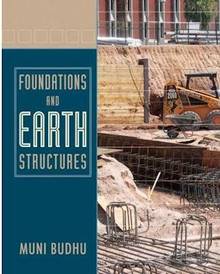Foundations and Earth Retaining Structures
Budhu, Muni / Budhu, Muniram
Éditeur : JOHN WILEY & SONS (IEEE)
ISBN papier: 9780471470120
Parution : 2007
Code produit : 1286038
Catégorisation :
Livres /
Génie /
Ingénierie générale /
Ingénierie générale
Formats disponibles
| Format | Qté. disp. | Prix* | Commander |
|---|---|---|---|
| Livre papier | En rupture de stock** |
Prix membre : 151,95 $ Prix non-membre : 159,95 $ |
*Les prix sont en dollars canadien. Taxes et frais de livraison en sus.
**Ce produits est en rupture de stock mais sera expédié dès qu'ils sera disponible.
Description
Foundations and Earth Structures is written primarily for an undergraduate course in foundation analysis and design. It should also appeal to graduate students and practicing engineers. There are three primary objectives for this textbook. Firstly, to present basic concepts and fundamental principles that are necessary to understand the background of the methods employed in foundation design. Secondly, to inform students on the values and limitations of popular methods of analyses in foundation engineering. Thirdly, to provide a framework for students to carry out simple foundation design and appreciate the design process. This is a textbook and not a design manual. Consequently, it emphasizes fundamentals rather than procedures. However, practical procedures, where appropriate, are included to allow students to transit into "office" design. The topics are sequenced so as not to rush the students into design but to build a solid foundation in the fundamentals so that they could understand the implications of the assumptions in the design.























